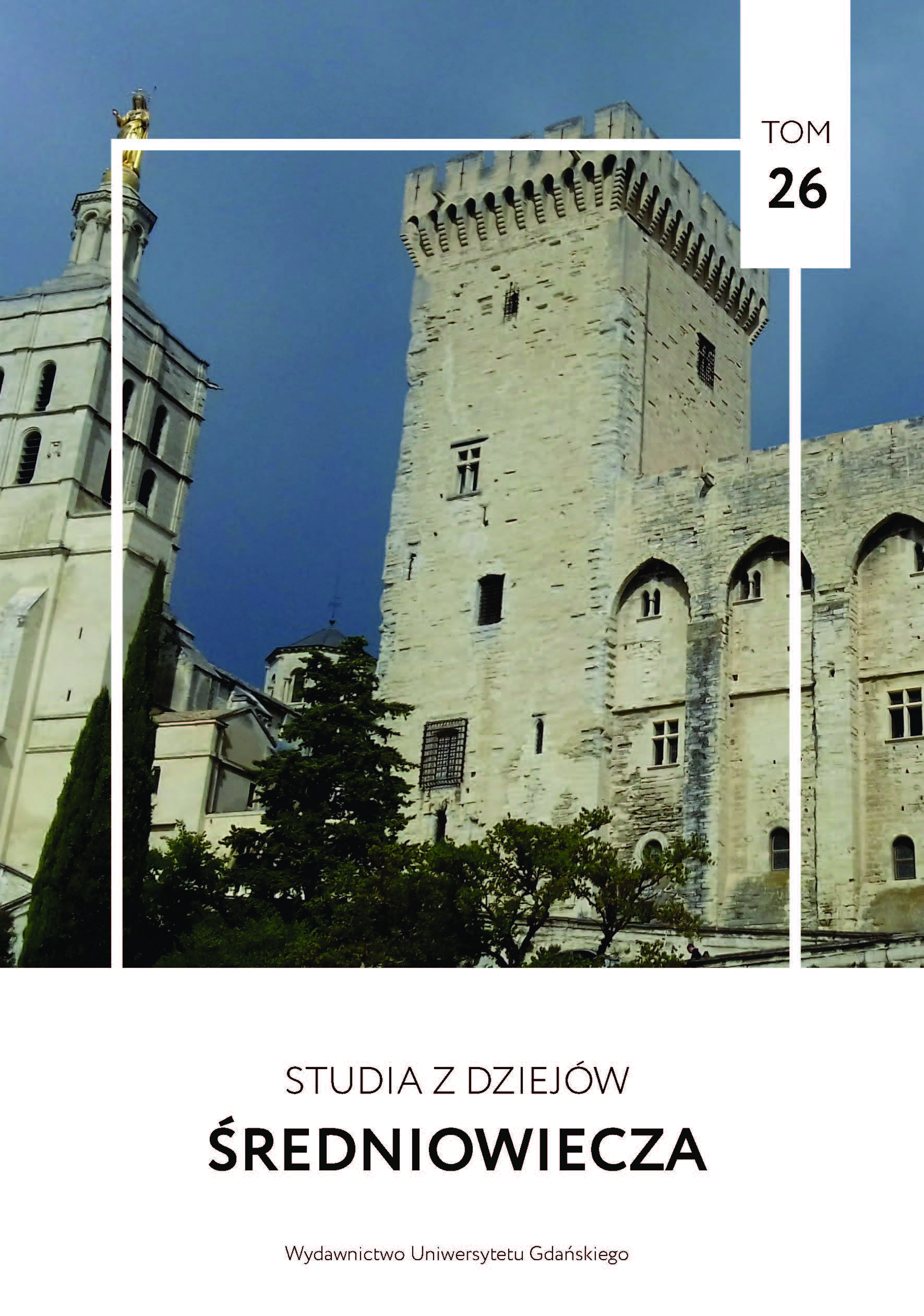Mistrz Jan – architekt Pałacu Wielkich Mistrzów na zamku malborskim. "Oeuvre" i oryginalny styl wybitnego mistrza budowlanego działającego między 1375 a 1406 r.
DOI:
https://doi.org/10.26881/sds.2023.26.03Słowa kluczowe:
architecture, the Grand Master’s Palace, Malbork, Arensburg, BytówAbstrakt
On the basis of historical sources and stylistic construction comparative studies, the following hypothetical statements can be formulated about the biography of Master John. He was born around or before 1350 and probably trained as a stonemason in Bohemia. About 1374 he was probably appointed by bishop Henry (of the diocese of Ösel Wiek in Livonia) to build the residence in Arensburg, where there can be found numerous stylistic and conceptual parallels to the Grand Master’s Palace. After the capture and later murder of the bishop in 1380, in which the Teutonic Order was involved, Master John moved to Malbork Castle, where he was commissioned by Winrich von Kniprode to build the new Grand Master’s Palace. He supervised this building process until its completion (the painting of the interiors in 1397) and, at the same time, designed the town hall of Malbork. Also the secondary residence of the Grand Master in Sztum could have been a creation of Master John. From 1398 to 1406 Master John was the architect of the Teutonic Order’s castle in Bytów.
With his unconventional architectural creations in the field of castle building, Master John occupied an outstanding position within the Central European “Reduction Gothic”. His was an independent and highly creative artistic personality, able to go beyond existing traditions and find new individual ways of doing things. Master John can thus be put on a par with other exceptional architects of his time (Peter Parler, Ulrich von Ensingen, Hans von Burghausen, and Madern Gerthener).
Downloads
Bibliografia
Źródła drukowane
Esth und Curländisches Urkundenbuch nebst Regesten, Bd. 3 (1368–1393), hrsg. v. F.G. von Bunge, Reval 1857.
Die Reste des Marienburger Konventsbuchs aus den Jahren 1395–1398, hrsg. v. A. Sielmann, „Zeitschrift des Westpreußischen Geschichts vereins” 1920, t. 60, s. 67–73.
Literatura przedmiotu
Herrmann C., Die Arensburg/Kuressaare – neue Überlegungen zur Datierung und zum Baumeister, „Burgen und Schlösser” 2021, H. 4, s. 212–227.
Herrmann C., Dienergänge und versteckte Kommunikationswege im Hochmeisterpalast der Marienburg (Malbork), „Château Gail lard” 2018, vol. 28, s. 161–171.
Herrmann C., Der Hochmeisterpalast auf der Marienburg, Petersberg 2019. Herrmann C., Ragnit, Neidenburg, Bütow – die letzten drei Deutschordensburgen in Preußen [w:] Die Burg im 15. Jahrhundert, hrsg. v. J. Zeune, Braubach 2011 („Veröffentlichungen der Deutschen Burgenvereinigung e.V. ”, Reihe B: Schriften, Bd. 12), s. 155–164.
Jóźwiak S., Trupinda J., Zamek krzyżacki w Sztumie w świetle źródeł pisanych [w:] 600 lat Sztumu. Studia z dziejów miasta i parafii św. Anny, red. A. Starczewski, R. Biskup, Sztum 2017, s. 22–44.
Pospieszny K., Malbork (Marienburg) [w:] Malarstwo gotyckie w Polsce. Katalog zabytków, red. A. Labuda, K. Secomska, Warszawa 2004, s. 70–73.
Schmid B., Maler und Bildhauer in Preußen, „Altpreußische Forschun gen” 1925, Bd. 1, s. 39–51.
Steinbrecht K., Der Hochmeisterpalast [w:] Geschäftsbericht des Vorstandes des Vereins für die Herstellung und Ausschmückung der Marienburg für die Zeit vom 1. Oktober 1916 bis zum 1. Juli 1920, Danzig 1920, s. 7–16.
Trupinda J., Das Amt des „Bauleiters” (magister lapidum; magister laterum; steinmeister; czygelmeyster; muwermeister) im Deutschordensstaat im 14. Jh. und in der ersten Hälfte des 15. Jh., „Ordines Militares” 2015, vol. 20, s. 239–268.
Trupinda J., Zespół heraldyczny z herbem von Jungingen w systemie dekoracji malarskiej piętra reprezentacyjnego Pałacu Wielkich Mistrzów w Malborku, „Studia z Dziejów Średniowiecza” 2006, t. 12, s. 397–423.
Voigt J., Das Stillleben des Hochmeisters des deutschen Ordens und sein Fürstenhof [w:] Historisches Taschenbuch, 1. Jahrgang, Leipzig 1830, s. 167–253.
Wasik B., Sprawozdanie z badań archeologiczno architektonicznych zamku w Sztumie (stan. nr 4) przeprowadzonych w 2019 roku, Malbork 2019 (mps).

 Uniwersyteckie Czasopisma Naukowe
Uniwersyteckie Czasopisma Naukowe





